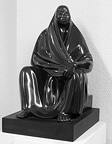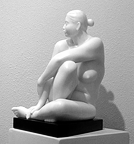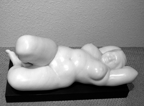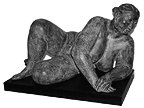- Armando Amaya
(Mexican, born 1935)
Featuring 11 original sculptures, please use the thumbnails to view the larger images and detailed info.
-
Amaya biography
Sculptor Armando Amaya is one of Mexico’s great interpreters of the female form. Like much of the evocative art created in the Latin American tradition, Amaya’s work is a confluence of European and indigenous esthetics. Born in Mexico City in 1935, Amaya studied at the National School of Painting and Sculpture under Jose Ruiz and Francisco Zuñiga. Later, he was appointed a Professorship at this same institution in 1969. He received much of his art training at the Esmeralda School, which was formed by a group of artisans producing government works.










